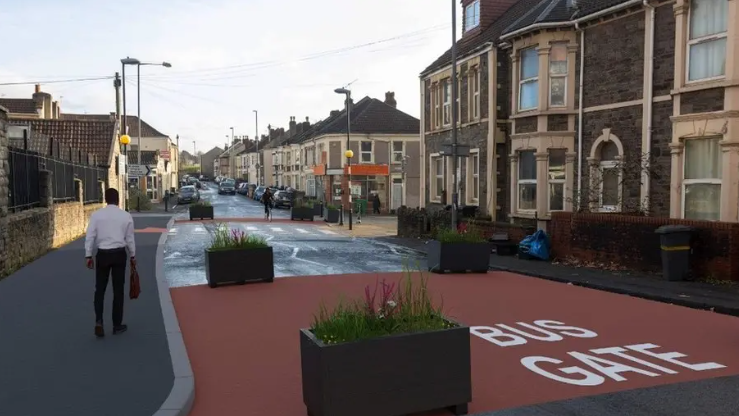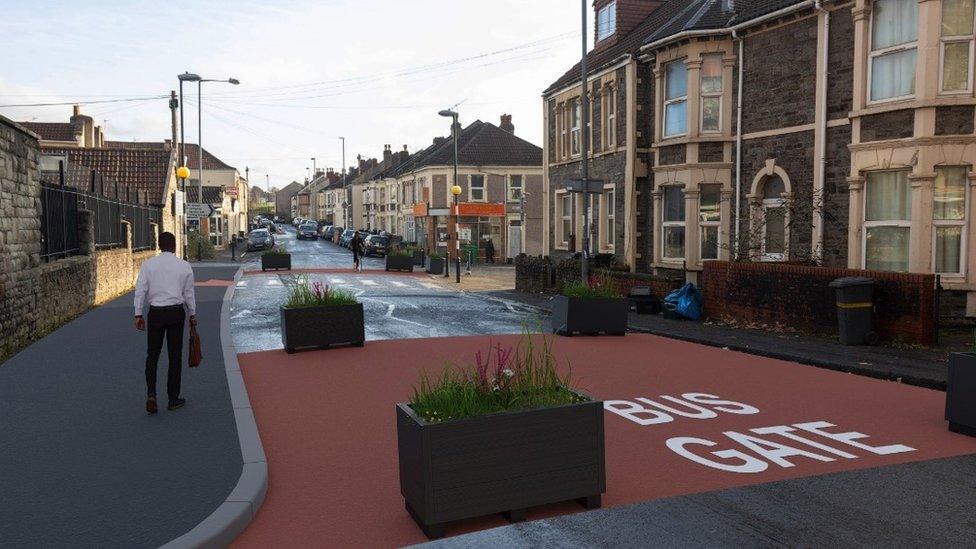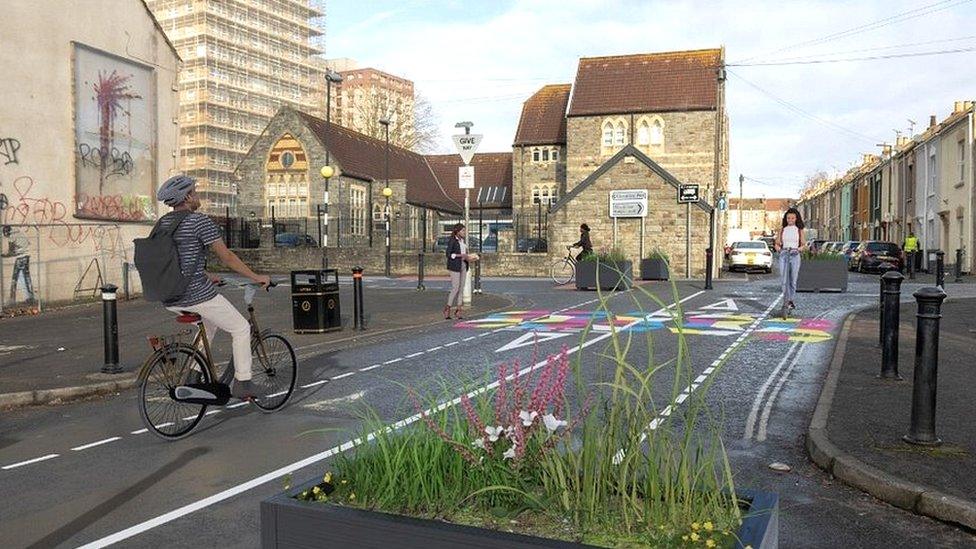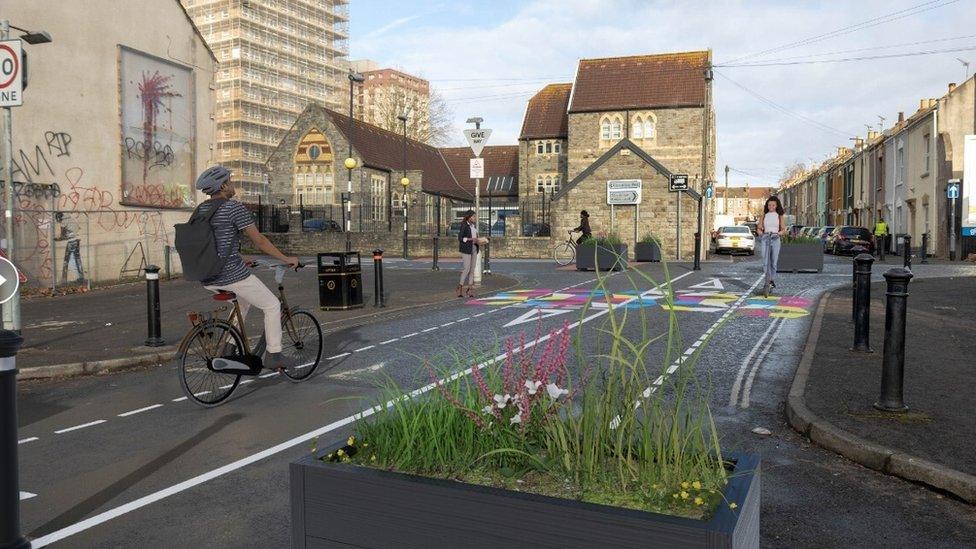Work begins on liveable neighbourhood pilot

- Published
Work is starting on a pilot project that aims to make areas of a city safer for cycling and walking by changing access for motorists.
The East Bristol Liveable Neighbourhood Scheme will see cars face restrictions from how they access some routes, and the introduction of one-way systems elsewhere.
The plans cover Barton Hill, parts of Redfield and St George and are an attempt to “create a safer, healthier and greener neighbourhood,” the city council said.
However, some residents fear it will just lead to greater congestion elsewhere.
The work starts on Monday and will see access for motorists on Avonvale Road, Marsh Lane and Pilemarsh change.
Changes will also be made for access to Barnes Street, Barton Hill Road, Beaufort Road, Cobden Street, Ducie Road, Glebe Road, Lincoln Street, The Avenue and Wicket Lane.
Buses, bikes, motorbikes, taxis, service vehicles and emergency services will still be able to enter.
Certain drivers, such as those with disabilities, care providers attending clients in the area, and families of high-needs children, may also be exempt from any changes.
Details of the changes are available on the council’s website.
Elsewhere, a one-way traffic system will be introduced on Cobden Street and Morton Street.
The scheme will see planters and “pocket” parks introduced to the neighbourhood, the council said, and views on the trial will be gathered next year.
Councillor Ed Plowden, chair of the transport and connectivity committee, said the project was the result of two years of engagement with residents.
A trial in St George, Redfield and Barton Hill will see fewer cars passing through
“From air pollution and road safety to a lack of places for the community to meet, a liveable neighbourhood is more than preventing rat-running, it’s about creating people-friendly streets,” Mr Plowden said.
He said the pilot is being built using temporary materials, to give an idea of how the streets could look if it is rolled out permanently.
The scheme has caused some controversy, with locals concerned about access for disabled and elderly people, and those with young families.
One person claimed that previous road closures in the area had led to higher traffic elsewhere.
"The knock-on effect has always been a highly congested Church Road, and new congestion on Summerhill Road," they said.
The work is due to be completed by 10 January.
Get in touch
Tell us which stories we should cover in Bristol
Follow BBC Bristol on Facebook, external, X, external and Instagram, external. Send your story ideas to us on email or via WhatsApp on 0800 313 4630.
- Published3 October 2023

- Published10 August 2023

- Published31 July 2023
